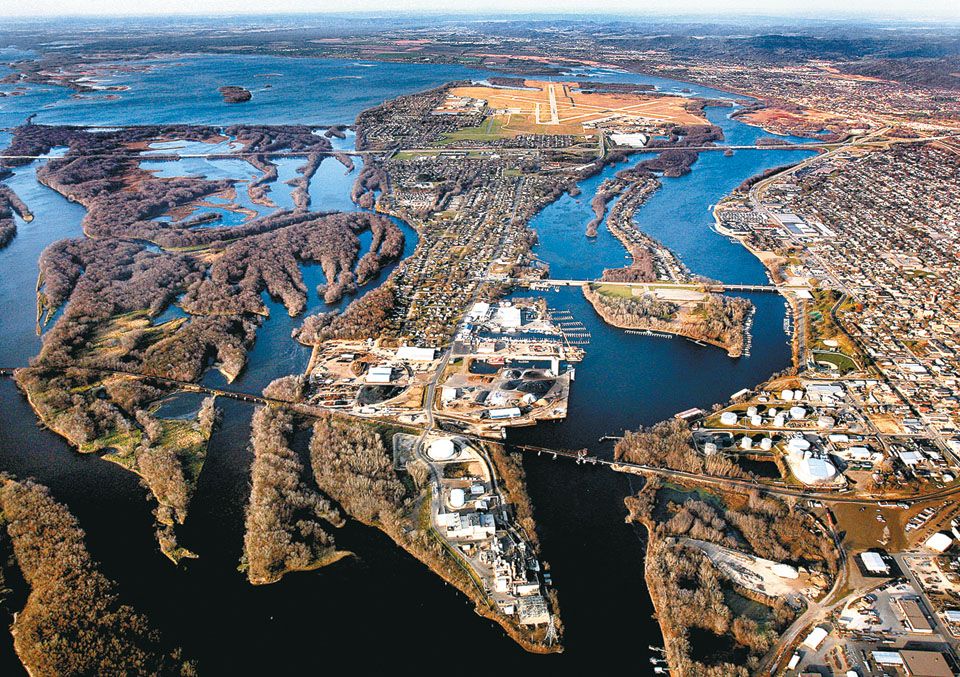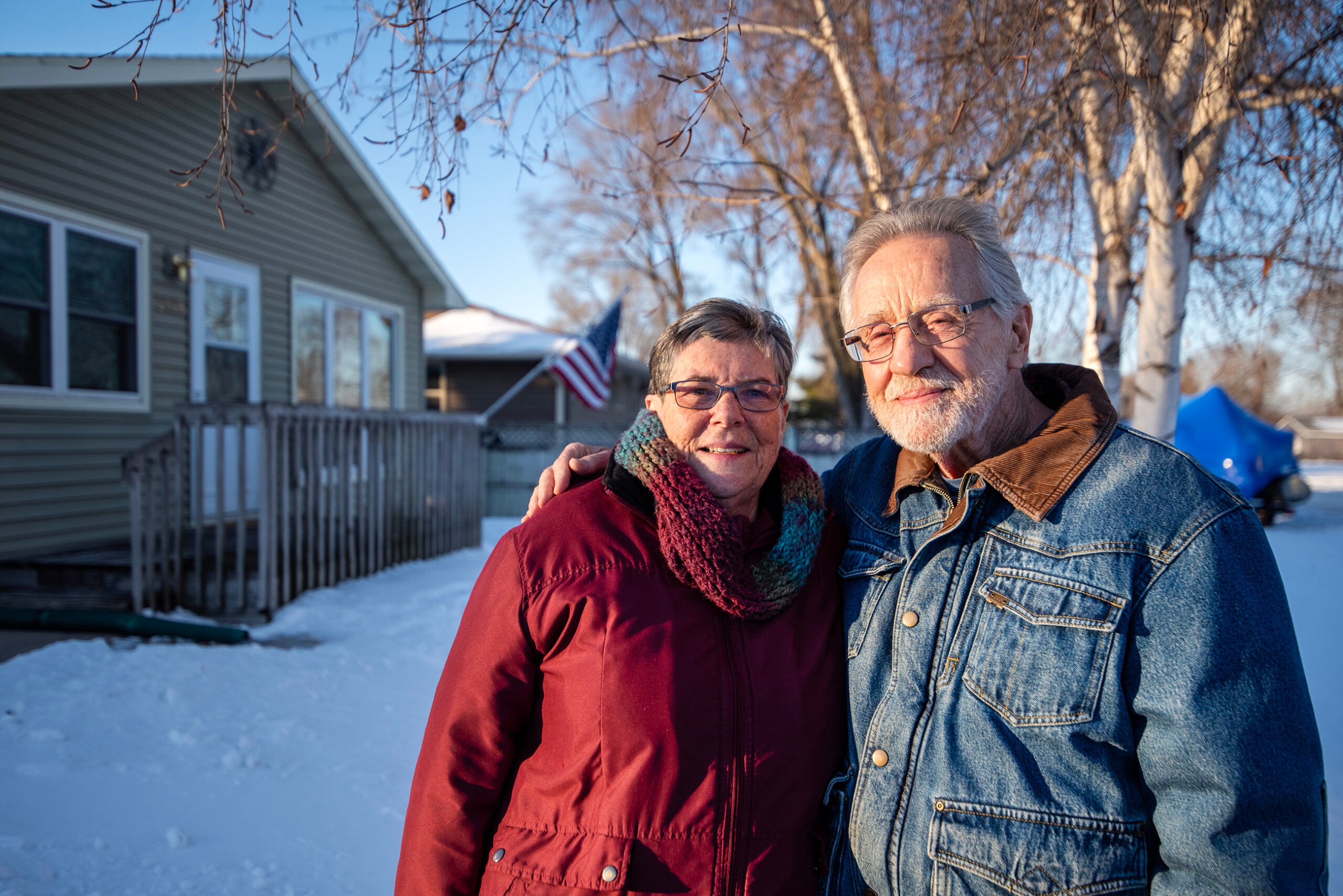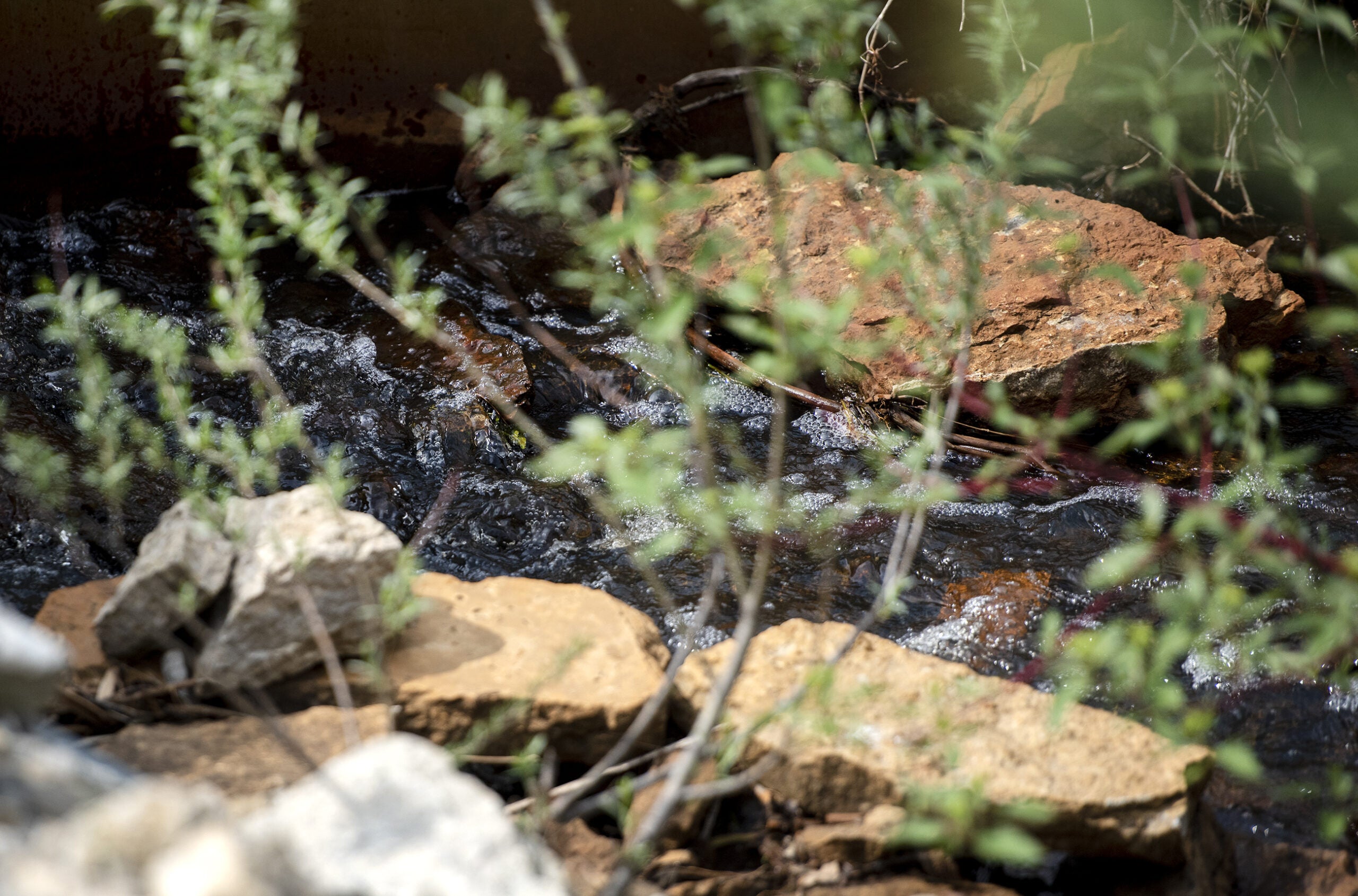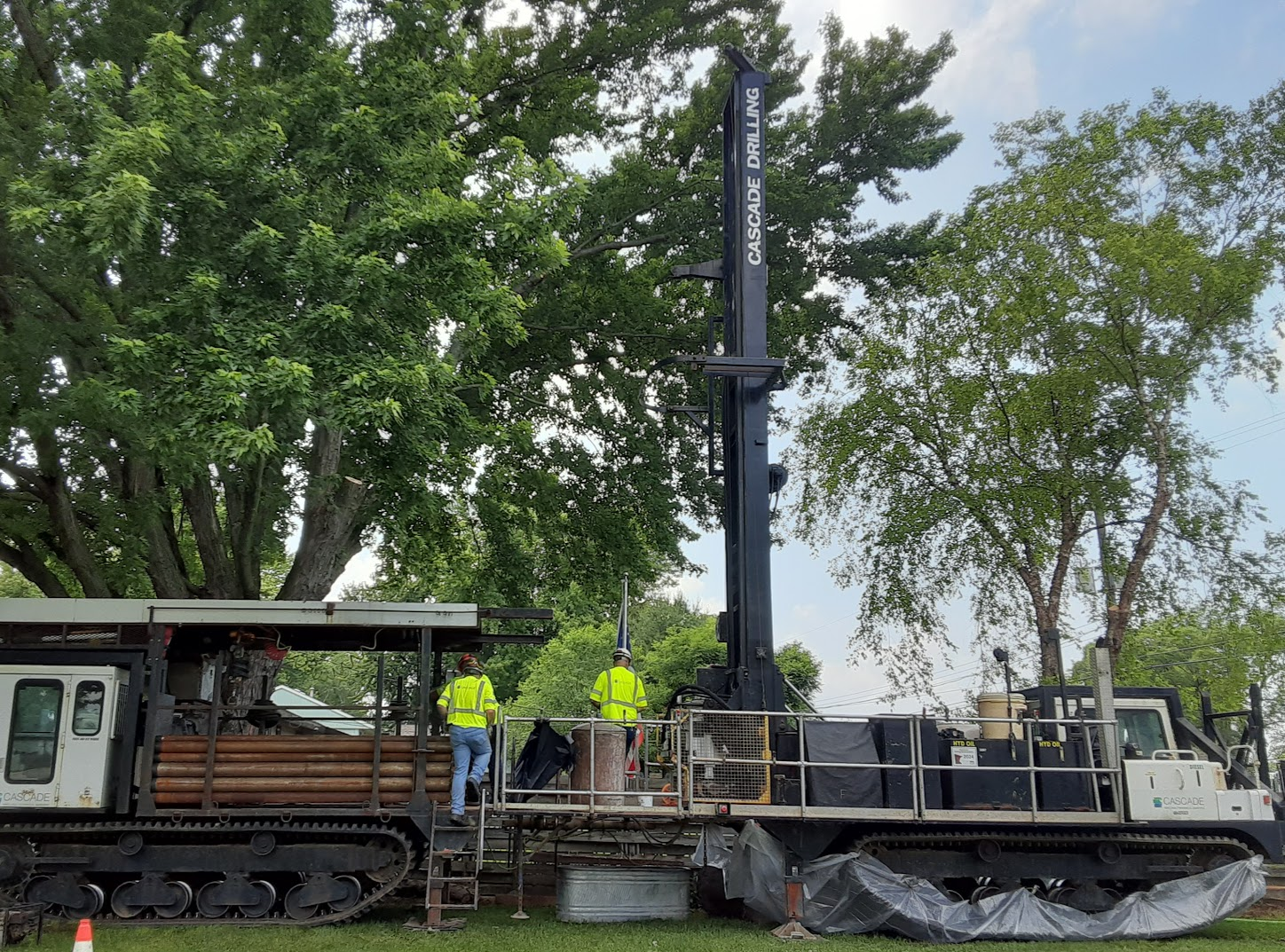A project on French Island near La Crosse aims to define the movement of PFAS in groundwater and to determine whether a deep aquifer could serve as a source of safe drinking water for residents with contaminated wells.
On Monday, a team of partners will drill to create three wells at depths ranging from 85 to 400 feet within the town of Campbell on French Island. Researchers with the University of Wisconsin-Madison will collect samples of sediment and rock beneath the surface. They will study the direction of the PFAS plume in the shallow groundwater aquifer and whether the harmful forever chemicals are flowing into the deeper Mount Simon aquifer, which stretches across much of Wisconsin.
PFAS, short for perfluoroalkyl and polyfluoroalkyl substances, have been found in everyday products and firefighting foam, and the use of that foam at the La Crosse Regional Airport has caused PFAS to seep into groundwater. Mike Cardiff, a geoscience professor at UW-Madison, said the plume is moving south from the airport toward the town.
Stay informed on the latest news
Sign up for WPR’s email newsletter.
“The town is searching now for a long-term potable source of drinking water,” Cardiff said. “All of the residents on the island currently pull their water from this shallow aquifer.”
Three years ago, the Department of Health Services issued an interim drinking water health advisory due to PFAS contamination of private wells on French Island. The Department of Natural Resources has found 166 of 553 public and private wells in the town have PFAS levels concerning to state health officials. Although, data shows the vast majority had some trace of the chemicals. The Environmental Protection Agency recently finalized drinking water standards for the two most widely studied PFAS at 4 parts per trillion – the lowest level they can be measured.
As part of the study, the three wells will monitor the pressure at different depths to gauge whether groundwater is naturally flowing downward to the deep aquifer or upward to the shallow aquifer. Cardiff said there’s some indication that groundwater is flowing upwards. That would mean that PFAS-contaminated groundwater isn’t flowing down toward the deeper water source.
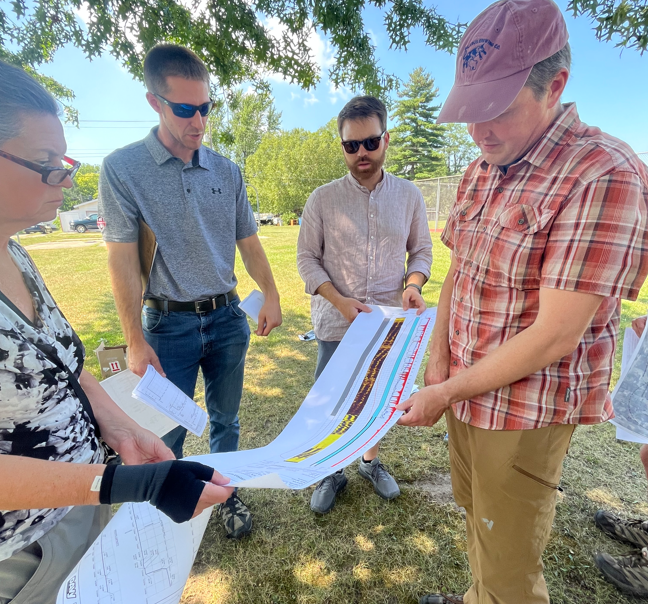
In other areas, including Madison, the Mount Simon aquifer is also protected by shale rocks that act like a cap, blocking contaminants at the surface from reaching the deep groundwater aquifer. Cardiff said researchers hope to determine whether that protective layer exists on French Island and how far it extends. Researchers will also measure core samples to determine how easily groundwater or contamination may pass between the two aquifers.
Chris Zahasky, an assistant geoscience professor at UW-Madison, said that includes measuring the “stickiness” of PFAS to rocks.
“Essentially that shale formation can act as sort of a natural filter” depending on the ‘stickiness’ of the rock,” Zahasky said.
The two-year project — which is already ongoing — is a collaboration between the university, Town of Campbell, La Crosse County, U.S. Geological Survey and Wisconsin Geological and Natural History Survey.
La Crosse County Board Supervisor Margaret Larson, who lives in the Town of Campbell, said the county is providing $500,000. The town is currently preparing a plan to create its own water utility that would draw from the deep aquifer. Depending on the study’s findings, she said it may help local officials access federal funding to develop the utility, which is expected to cost tens of millions of dollars.
“I’m just thinking that this study that’s going on is going to be an essential part of applying for grants in order to get safe water to everyone in the town,” Larson said.
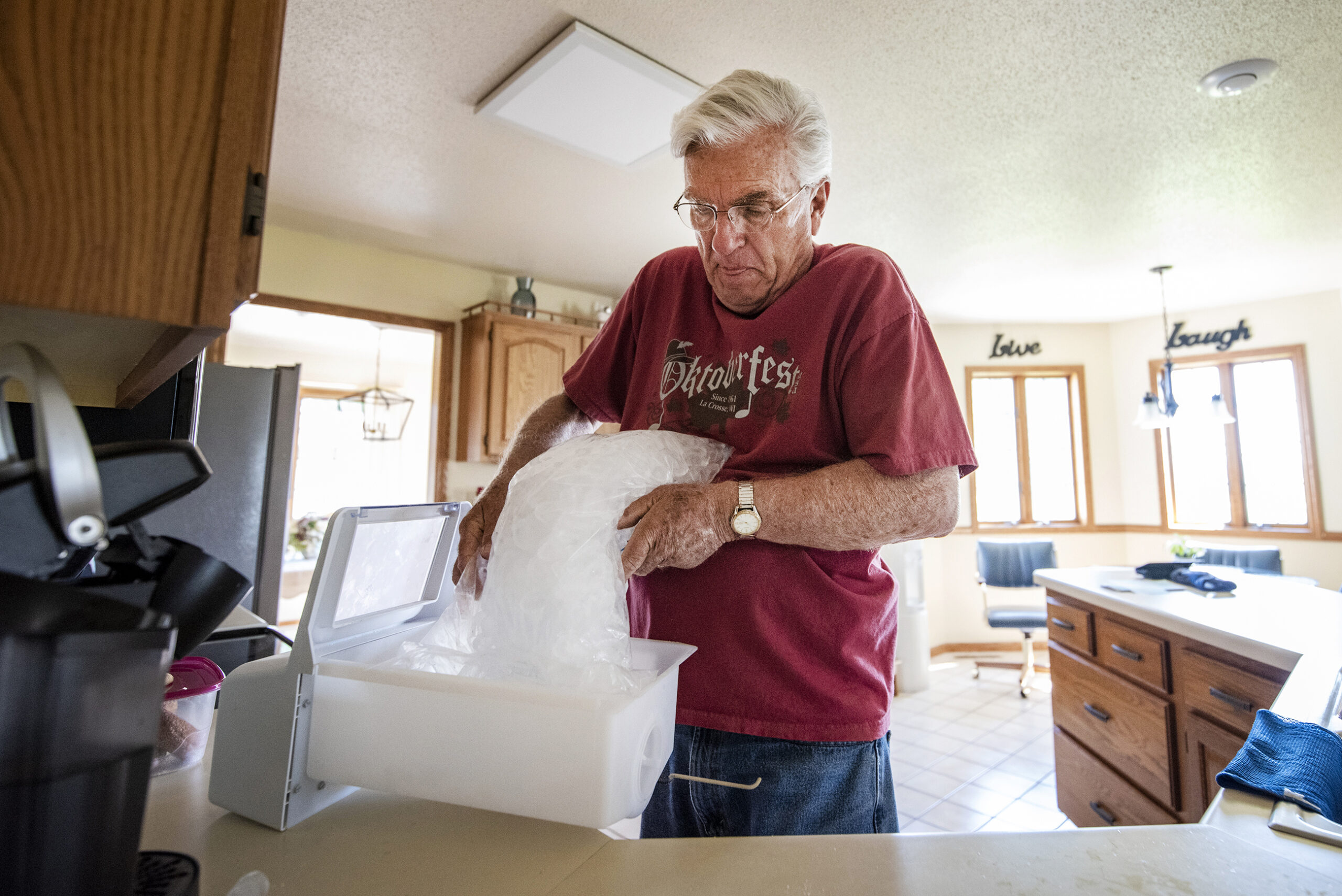
Larson said the town is pursuing the water utility because it would be too costly for individual homeowners to drill wells into the deep aquifer, noting a test well that has already been drilled cost around $200,000. Larson added homeowners who choose to drill their own deep wells may also risk introducing contamination if they aren’t properly designed.
“If the lower aquifer were to be contaminated by PFAS, we’d all be in bad shape,” Larson said.
If the town moves forward with a water utility, water from the deep aquifer would still require treatment for iron, manganese and radium. As the town weighs its options, another goal of the project is to determine whether pumping from the Mount Simon aquifer could increase the risk of PFAS contamination making its way into the deep water source.
Last fall, community members filed class action lawsuits against the city of La Crosse and chemical companies for PFAS contamination of their private wells. The state is currently providing bottled water to about 1,500 of the town’s roughly 4,300 residents.
For more than three years, Larson said many residents have been using bottled water for cooking, bathing and drinking.
“The town is working hard to come up with a solution and to find funding for it, so that they can go back to using their tap water,” Larson said.
Researchers said they hope to release findings from core samples and modeling sometime next summer.
Wisconsin Public Radio, © Copyright 2025, Board of Regents of the University of Wisconsin System and Wisconsin Educational Communications Board.
